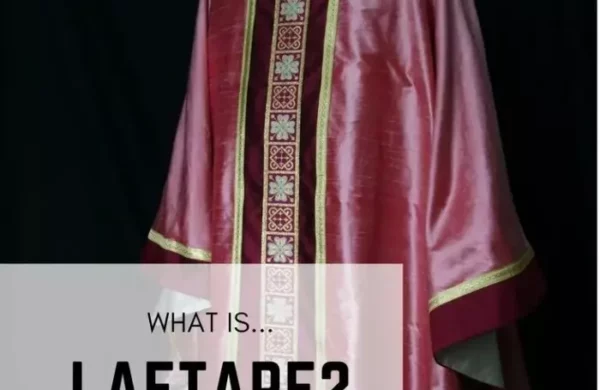
The word Laetare means “rejoice” in the Latin text of the word. Laetare was ultimately decided to be the name for this Sunday of rejoicing and celebration from the Latin text of the scripture verses found in the 66th chapter of the book of Isaiah.
The six-week season of Lent is overall a time of solemn and somber fasting spent in penance and preparation for the coming of Easter Sunday.
Like this:
Like Loading...
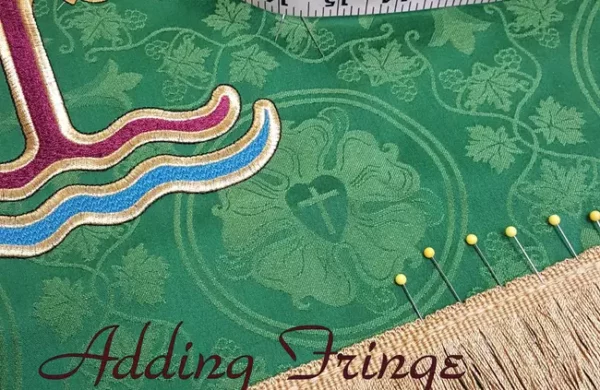
To sew fringe, you have two options. The first is using a multi-step zigzag stitch with a matching thread color. Keep the stitch width wide and length short, with zigs and zags about 1/4 inch apart. The second method involves using an edge foot for straight stitching. Adjust the needle position to stitch about 3/16″ from the fringe’s edge, and guide the fringe along the edge foot for straight and even stitches. Sew slowly to maintain precision.
Like this:
Like Loading...
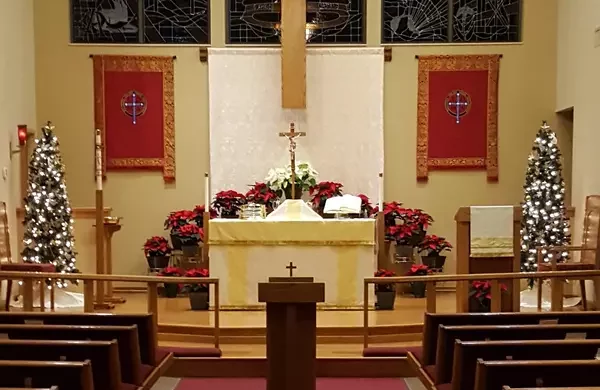
This little chapel sits in the corner of a larger room. A great deal of care has been taken with the chapel. There is an Advent stand with the Advent candles, a cross in the corner on the wall, the hymn board, the candles, and book stand on the altar, the altar linens and the altar hangings. The scene in the altar antependium is that of the manger in a circle or nimbus with the star. The various blues of the background indicate the shades of the nighttime sky. The charm comes in knowing that in this place, someone has taken care to ensure that the altar of the Lord is prepared for the services that will take place in this tiny chapel.
Like this:
Like Loading...
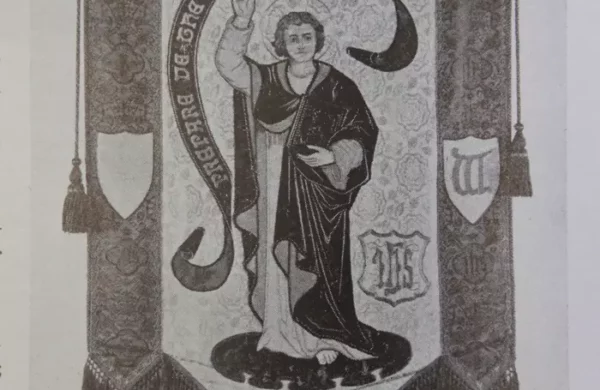
. September 13th is the feast day for St. John Chrysostom–born circa 349 A.D., although many dates between 344 A.D. and 354 A.D. have been argued for by various scholars. This man is one of the pillars of the faith, a church father. His early education influenced his ability to lead the Church and give her many gifts in the form of sermons and liturgy.
Like this:
Like Loading...
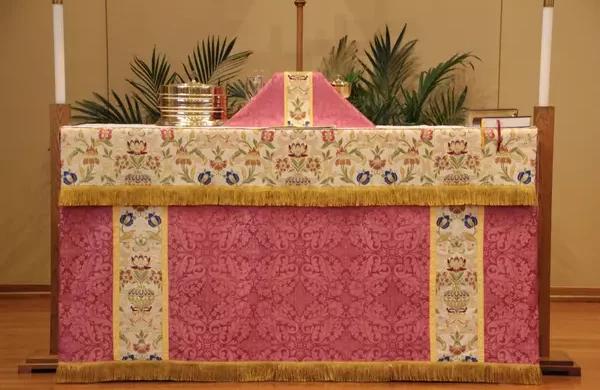
Using Rose Vestments during Advent and Lent varies among differing church bodies. The New Liturgical Movement has some information on the historical use of Rose Vestments within the Catholic Church. The Lutheran Church Missouri Synod’s view on Rose Vestments is slightly different. If a Rose Vestment Set is desired or planned for your church, be sure to check with your pastor or bishop concerning appropriate use and guidelines for liturgical colors.
Like this:
Like Loading...
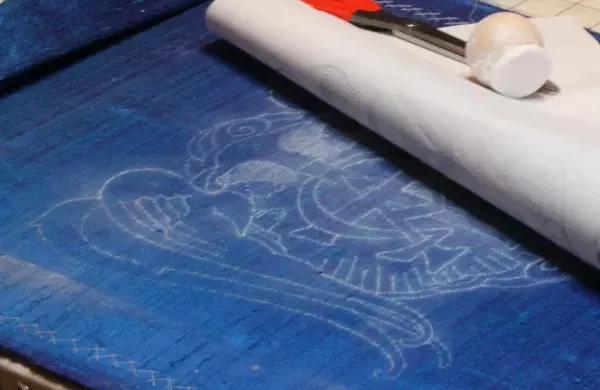
This Advent Vestment set is designed for a shorter lifespan, around 5 to 15 years. The construction process allows for quicker techniques, like using fusible web for the appliqué. Appliqué parts, cut from Silk Dupioni and a cotton/linen blend for the flesh tones, are ironed in place for easy and accurate positioning. The traced design on the blue silk aids in precise placement. While traditional methods may have used homemade paste, the use of fusible web aligns with the project’s practical goals.
Like this:
Like Loading...
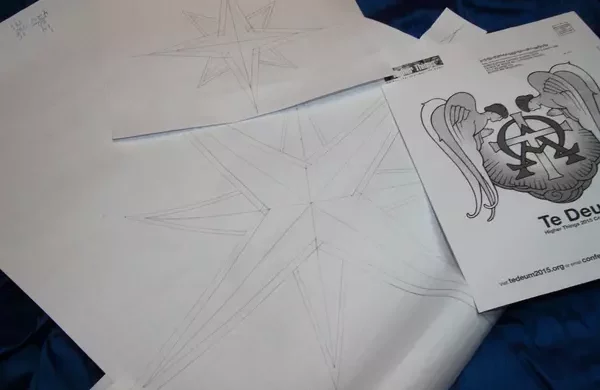
Ecclesiastical Sewing takes a break from finishing the Monk’s Habit to brainstorm Advent Altar Hanging and Pulpit Fall Ideas. Current hangings are deemed unsatisfactory, prompting a plan for an interim Advent Set using machine embroidery on Silk Dupioni fabric. The proposed design includes stars, Alpha and Omega, and Chi-Rho symbols. Time constraints pose a challenge, but the aim is to complete the project using a beautiful blue Silk Dupioni fabric and possibly incorporating Silver Elizabethan Twist thread for added shimmer.
Like this:
Like Loading...
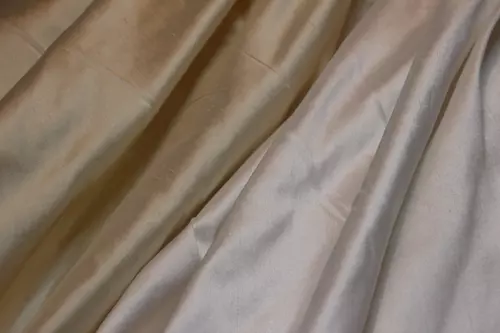
Choosing fabrics for Ecclesiastical Sewing involves factors like season, budget, and project duration. Silk Dupioni and cost-effective options suit various vestment pieces. True Ecclesiastical Fabrics like Fairford and Wakefield, though pricier, offer quality and durability. Their longevity justifies the investment, making the cost minimal over the Vestment’s service life.
Like this:
Like Loading...
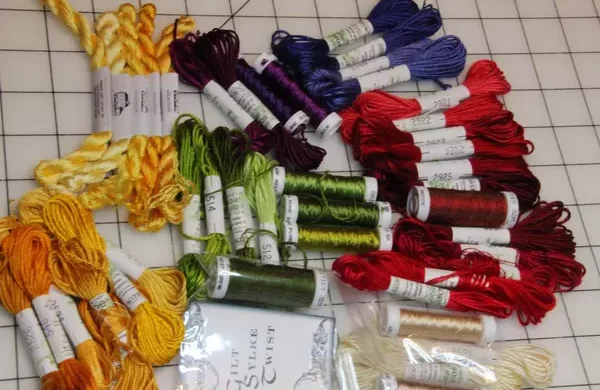
Testing colors for the Easter Set Pulpit Fall involves a rich and vibrant palette to convey the Glory of the Resurrection. The initial focus is on the color green, stitched with Au Ver A Soie- Soie D’Alger, Soie Paris, and Gilt Silk Twist. The lily leaves are satin stitched, with stem stitching using two strands for a textured effect.
Like this:
Like Loading...
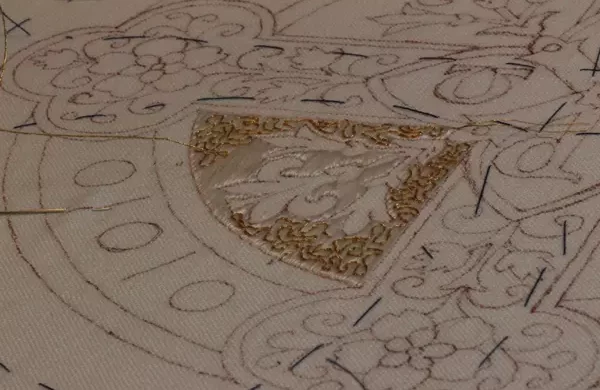
Progress on the Easter Set Pulpit Fall showcases intricate goldwork using Elizabethan Twist. The careful manipulation of the gold thread adds to the elegance. Soie Ovale silk thread in Creme complements the goldwork, and the laying tool aids in achieving a smooth finish. Balancing the gold thread and maintaining precision are ongoing challenges.
Like this:
Like Loading...

Stitching progress on the Easter Set Pulpit Fall project, focusing on the quarter circle with silk embroidery. Using Au Ver A Soie – Soie Ovale in Crème, the flat silk creates a textured and elegant background. Goldwork couching up next!
Like this:
Like Loading...
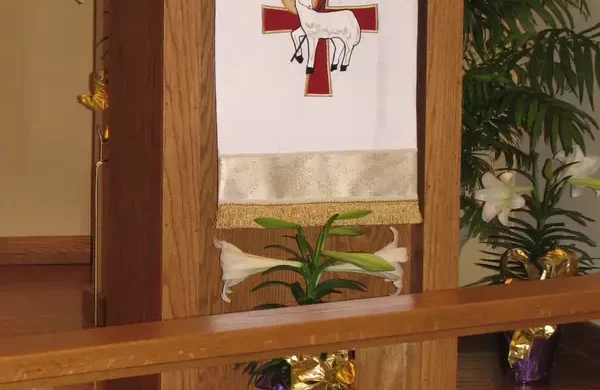
Creating various designs for Church Vestments remained a challenge. The Agnus Dei symbol aided in creating the pulpit fall, while inspiration from stained glass guided the design of the Altar Frontal. The quest for better designs spanned years, incorporating research, internet searches, and volunteer work. Gradually, more refined designs came to light.
Like this:
Like Loading...
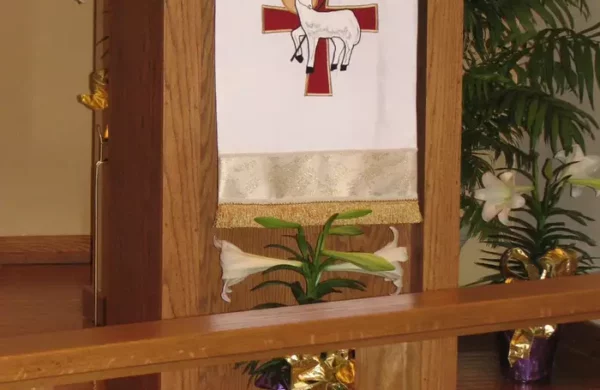
Early struggles in Ecclesiastical Sewing led to the first project, an Altar Frontal and Pulpit Fall set. The rush to meet deadlines resulted in noticeable mistakes, but the set, though flawed, was used for Easter and admired by non-sewers. Reflecting on the errors, aimed to improve skills and techniques in Ecclesiastical Sewing.
Like this:
Like Loading...














You must be logged in to post a comment.